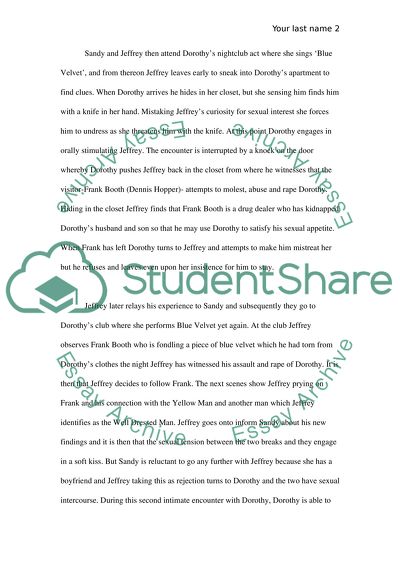Cite this document
(“Interpretations of David Lynch's film Blue Velvet (1986) often suggest Essay”, n.d.)
Interpretations of David Lynch's film Blue Velvet (1986) often suggest Essay. Retrieved from https://studentshare.org/visual-arts-film-studies/1459742-interpretations-of-david-lynch-s-film-blue-velvet
Interpretations of David Lynch's film Blue Velvet (1986) often suggest Essay. Retrieved from https://studentshare.org/visual-arts-film-studies/1459742-interpretations-of-david-lynch-s-film-blue-velvet
(Interpretations of David Lynch'S Film Blue Velvet (1986) Often Suggest Essay)
Interpretations of David Lynch'S Film Blue Velvet (1986) Often Suggest Essay. https://studentshare.org/visual-arts-film-studies/1459742-interpretations-of-david-lynch-s-film-blue-velvet.
Interpretations of David Lynch'S Film Blue Velvet (1986) Often Suggest Essay. https://studentshare.org/visual-arts-film-studies/1459742-interpretations-of-david-lynch-s-film-blue-velvet.
“Interpretations of David Lynch'S Film Blue Velvet (1986) Often Suggest Essay”, n.d. https://studentshare.org/visual-arts-film-studies/1459742-interpretations-of-david-lynch-s-film-blue-velvet.


